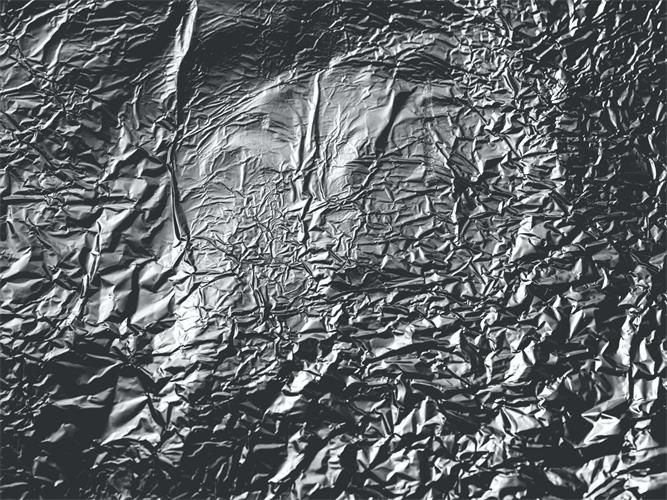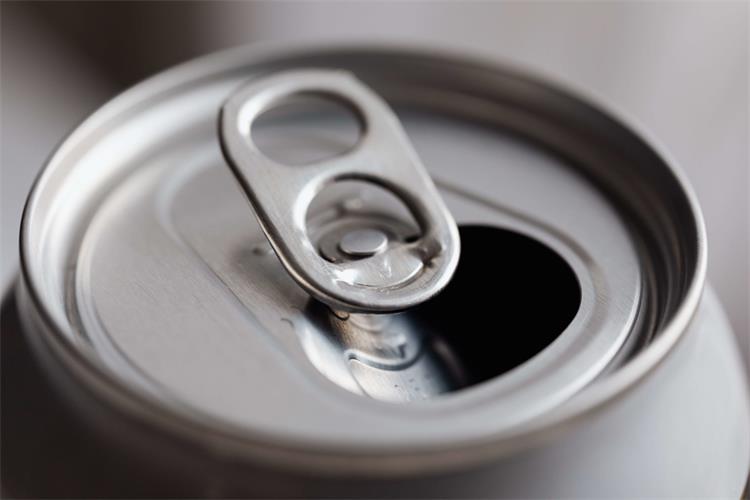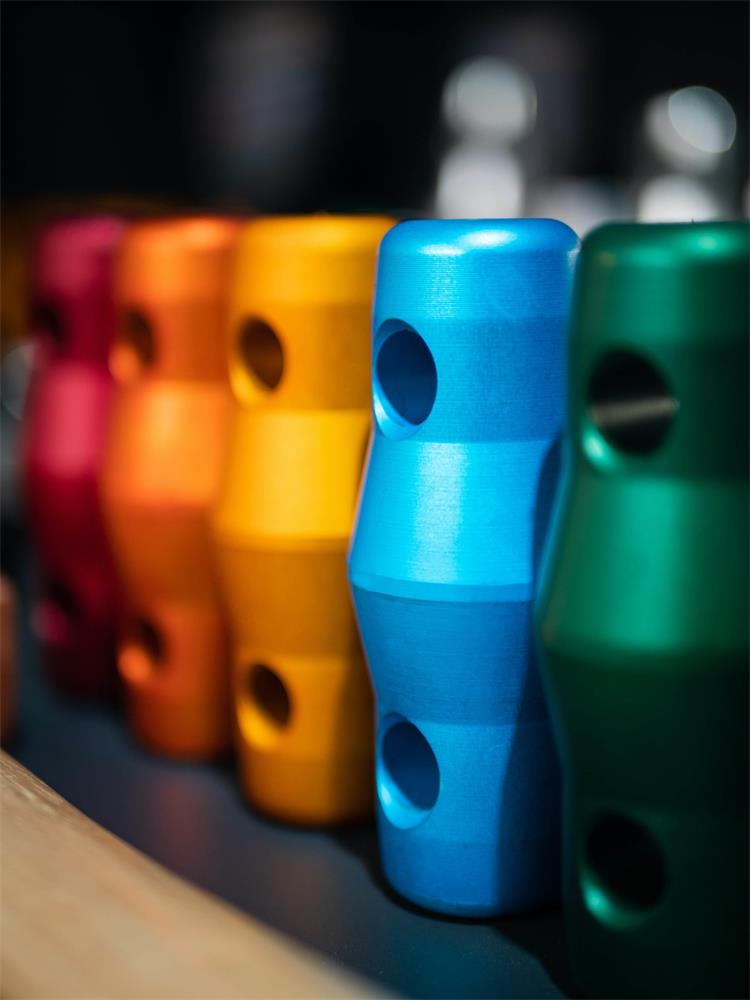Aluminum also has high corrosion resistance, because when the material is exposed to the air, it will naturally form a protective oxide layer. This oxidation can also be induced artificially to provide stronger protection. The natural protective layer of aluminum makes it more resistant to corrosion than carbon steel. In addition, aluminum is a good heat conductor and electrical conductor, better than carbon steel and stainless steel.

(Aluminum foil)
Of course, the use of aluminum also has some disadvantages, especially when compared to steel. It is not as hard as steel, which makes it a poor choice for parts that withstand greater impact or extremely high load capacity. The melting point of aluminum is also significantly lower (660°C, when the melting point of steel is lower, about 1400°C), it cannot withstand extreme high temperature applications. It also has a high thermal expansion coefficient, so if the temperature is too high during processing, it will deform and it is difficult to maintain strict tolerances. Finally, aluminum may be more expensive than steel due to higher power requirements during consumption.
Aluminum alloy
By slightly adjusting the amount of aluminum alloy elements, countless kinds of aluminum alloys can be manufactured. However, some compositions have proven to be more useful than others. These common aluminum alloys are grouped according to the main alloying elements. Each series has some common attributes. For example, 3000, 4000, and 5000 series aluminum alloys cannot be heat treated, so cold working is used, which is also called work hardening. To
Main aluminum alloy types are as below.
1000 series
Aluminum 1xxx alloys contain the purest aluminum, with an aluminum content of at least 99% by weight. There are no specific alloying elements, most of which are almost pure aluminum. For example, aluminum 1199 contains 99.99% aluminum by weight and is used to make aluminum foil. These are the softest grades, but they can be work hardened, which means they become stronger when deformed repeatedly.
2000 series
The main alloying element of 2000 series aluminum is copper. These grades of aluminum can be precipitation hardened, which makes them almost as strong as steel. Precipitation hardening involves heating the metal to a certain temperature to allow the precipitation of other metals to precipitate out of the metal solution (while the metal remains solid), and helps to increase the yield strength. However, due to the addition of copper, 2xxx aluminum grades have lower corrosion resistance. Aluminum 2024 also contains manganese and magnesium and is used in aerospace parts.
3000 series
Manganese is the most important additive element in the aluminum 3000 series. These aluminum alloys can also be work hardened (this is necessary to achieve a sufficient level of hardness, because these grades of aluminum cannot be heat treated). Aluminum 3004 also contains magnesium, an alloy used in aluminum beverage cans, and its hardened variants.

4000 series
The 4000 series aluminum includes silicon as the main alloying element. Silicon lowers the melting point of 4xxx grade aluminum. Aluminum 4043 is used as a filler rod material for welding 6000 series aluminum alloys, while aluminum 4047 is used as a sheet and cladding.
5000 series
Magnesium is the main alloying element in the 5000 series. These grades have some of the best corrosion resistance, so they are often used in marine applications or other situations facing extreme environments. Aluminum 5083 is an alloy commonly used in marine parts.
6000 series
Both magnesium and silicon are used to make some of the most common aluminum alloys. The combination of these elements is used to create the 6000 series, which is usually easy to process and precipitation hardening. In particular, 6061 is one of the most common aluminum alloys and has high corrosion resistance. It is commonly used in structural and aerospace applications.
7000 series
These aluminum alloys are made of zinc, and sometimes contain copper, chromium, and magnesium. They can be precipitation hardened to become the strongest of all aluminum alloys. The 7000 grade is often used in aerospace applications due to its high strength. 7075 is a common grade. Although its corrosion resistance is higher than that of 2000 series materials, its corrosion resistance is lower than other alloys. This alloy is commonly used, but is particularly suitable for aerospace applications. To
These aluminum alloys are made of zinc, and sometimes copper, chromium, and magnesium, and can become the strongest of all aluminum alloys by precipitation hardening. Class 7000 is usually used in aerospace applications due to its high strength. 7075 is a general grade with lower corrosion resistance than other alloys.
8000 series
The 8000 series is a general term that does not apply to any other types of aluminum alloys. These alloys can include many other elements, including iron and lithium. For example, 8176 aluminum contains 0.6% iron and 0.1% silicon by weight and is used to make wires.
Aluminum tempering treatment and surface treatment
Heat treatment is a common conditioning process, which means that it changes the material properties of many metals at the chemical level. Especially for aluminum, it is necessary to increase the hardness and strength. Untreated aluminum is a soft metal, so in order to withstand certain applications, it needs to go through a certain adjustment process. For aluminum, the process is indicated by the letter name at the end of the grade number.
Heat treatment
2xxx, 6xxx and 7xxx series aluminum can all be heat treated. This helps to increase the strength and hardness of the metal, and is beneficial for certain applications. Other alloys 3xxx, 4xxx and 5xxx can only be cold worked to increase strength and hardness. Different letter names (called tempered names) can be added to the alloy to determine which treatment is used. These names are:
F indicates that it is in the manufacturing state, or the material has not undergone any heat treatment.
H means that the material has undergone some kind of work hardening, whether or not it is carried out simultaneously with the heat treatment. The number after "H" indicates the type of heat treatment and hardness.
O indicates that the aluminum is annealed, which reduces the strength and hardness. This seems to be a strange choice-who would want a softer material? However, annealing produces a material that is easier to process, possibly tougher, and more ductile, which is advantageous for certain manufacturing methods.
T indicates that the aluminum has been heat treated, and the number after "T" indicates the details of the heat treatment process. For example, Al 6061-T6 undergoes solution heat treatment (maintained at 980 degrees Fahrenheit, then quenched in water for rapid cooling), and then aging treatment between 325 and 400 degrees Fahrenheit.
Surface treatment
There are many surface treatments that can be applied to aluminum, and each surface treatment has appearance and protection characteristics suitable for different applications. To
There is no effect on the material after polishing. This surface treatment requires less time and effort, but is usually not enough for decorative parts, and is most suitable for prototypes that only test function and suitability.
Sanding is the next step up from the machined surface. Pay more attention to the use of sharp tools and finishing passes to produce a smoother surface finish. This is also a more precise processing method, usually used to test parts. However, this process still leaves machine traces, so it is usually not used in the final product.
Sandblasting creates a matte surface by spraying tiny glass beads on aluminum parts. This will remove most (but not all) processing marks and give it a smooth but grainy appearance. The iconic appearance and feel of some popular laptops comes from sandblasting before anodizing.

Anodizing is a common surface treatment method. It is a protective oxide layer that will naturally form on the aluminum surface when exposed to the air. During manual processing, aluminum parts are hung on a conductive support, immersed in an electrolytic solution, and direct current is introduced into the electrolytic solution. When the acid of the solution dissolves the naturally formed oxide layer, the current releases oxygen on its surface, thereby forming a new protective layer of aluminum oxide.

By balancing the dissolution rate and the accumulation rate, the oxide layer forms nanopores, allowing the coating to continue to grow beyond what is naturally possible. Later, for aesthetic reasons, the nanopores are sometimes filled with other corrosion inhibitors or colored dyes, and then sealed to complete the protective coating.
Aluminum processing skills
1. If the workpiece is overheated during processing, the high thermal expansion coefficient of aluminum will affect the tolerance, especially for thin parts. To prevent any negative effects, heat concentration can be avoided by creating tool paths that are not concentrated in one area for too long. This method can dissipate heat, and the tool path can be viewed and modified in the CAM software that generates the CNC machining program.
2.2. If the force is too large, the softness of some aluminum alloys will promote deformation during processing. Therefore, according to the recommended feed rate and speed to process a specific grade of aluminum, in order to generate the appropriate force during the process. Another rule of thumb to prevent deformation is to keep the part thickness greater than 0.020 inches in all areas.
3. Another effect of the ductility of aluminum is that it can form a combined edge of the material on the tool. This will conceal the sharp cutting surface of the tool, make the tool blunt, and reduce its cutting efficiency. This accumulation edge can also cause a poor surface finish on the part. In order to avoid accumulation of edges, experiment with tool materials; try to replace HSS (high-speed steel) with carbide inserts, or vice versa, and adjust the cutting speed. You can also try to adjust the amount and type of cutting fluid.
Let us know about how to process Aluminum parts by CNC machining as following video.
----------------------------------------------------------END----------------------------------------------------------------------

